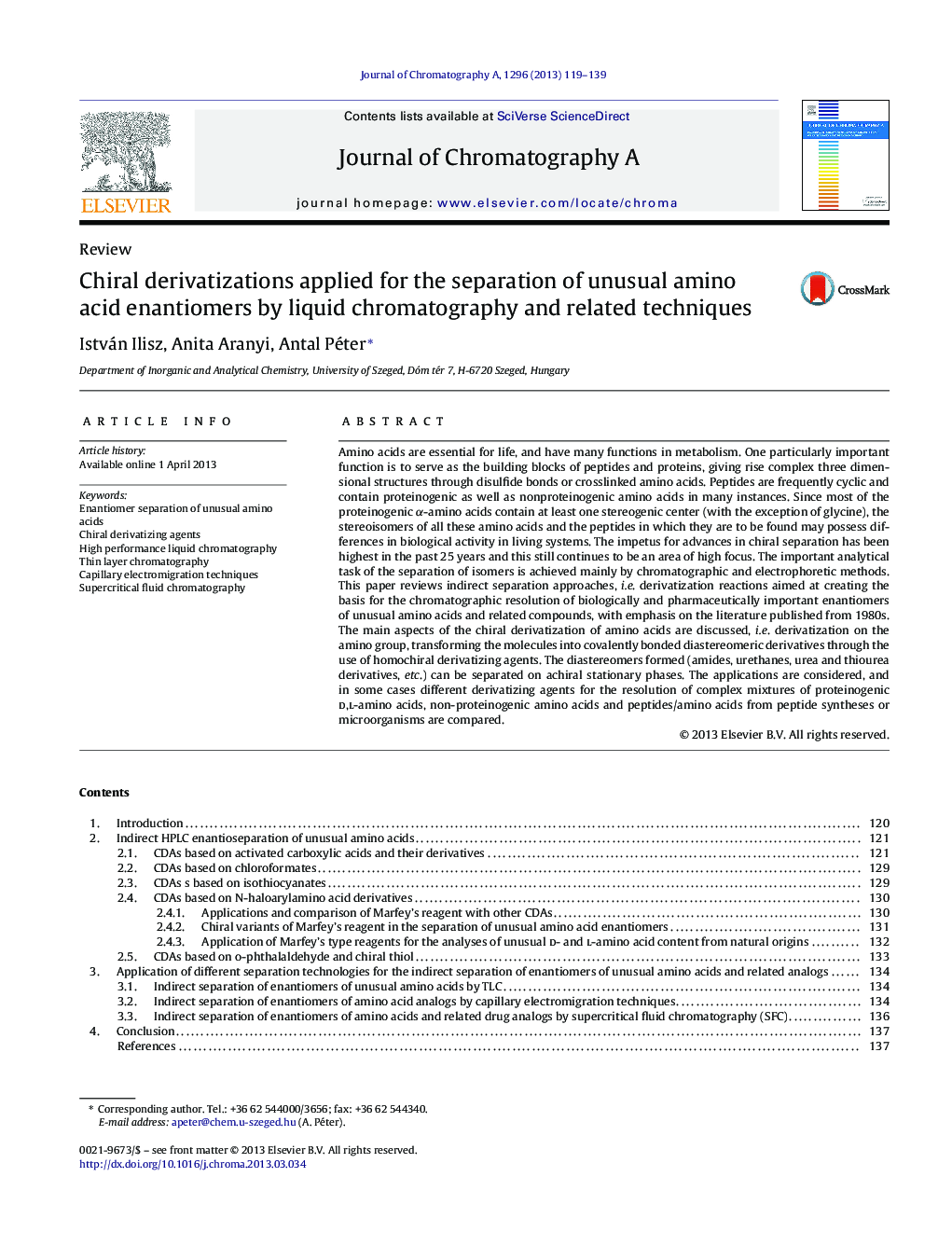| Article ID | Journal | Published Year | Pages | File Type |
|---|---|---|---|---|
| 1200146 | Journal of Chromatography A | 2013 | 21 Pages |
•Enantiomer separation of unusual amino acids applying chiral derivatization agents.•Application of high performance liquid chromatography in indirect enantioseparation.•Application of thin layer chromatography in indirect enantioseparation.•Application of capillary electromigration techniques in indirect enantioseparation.•Application of supercritical fluid chromatography in indirect enantioseparation.
Amino acids are essential for life, and have many functions in metabolism. One particularly important function is to serve as the building blocks of peptides and proteins, giving rise complex three dimensional structures through disulfide bonds or crosslinked amino acids. Peptides are frequently cyclic and contain proteinogenic as well as nonproteinogenic amino acids in many instances. Since most of the proteinogenic α-amino acids contain at least one stereogenic center (with the exception of glycine), the stereoisomers of all these amino acids and the peptides in which they are to be found may possess differences in biological activity in living systems. The impetus for advances in chiral separation has been highest in the past 25 years and this still continues to be an area of high focus. The important analytical task of the separation of isomers is achieved mainly by chromatographic and electrophoretic methods. This paper reviews indirect separation approaches, i.e. derivatization reactions aimed at creating the basis for the chromatographic resolution of biologically and pharmaceutically important enantiomers of unusual amino acids and related compounds, with emphasis on the literature published from 1980s. The main aspects of the chiral derivatization of amino acids are discussed, i.e. derivatization on the amino group, transforming the molecules into covalently bonded diastereomeric derivatives through the use of homochiral derivatizing agents. The diastereomers formed (amides, urethanes, urea and thiourea derivatives, etc.) can be separated on achiral stationary phases. The applications are considered, and in some cases different derivatizing agents for the resolution of complex mixtures of proteinogenic d,l-amino acids, non-proteinogenic amino acids and peptides/amino acids from peptide syntheses or microorganisms are compared.
